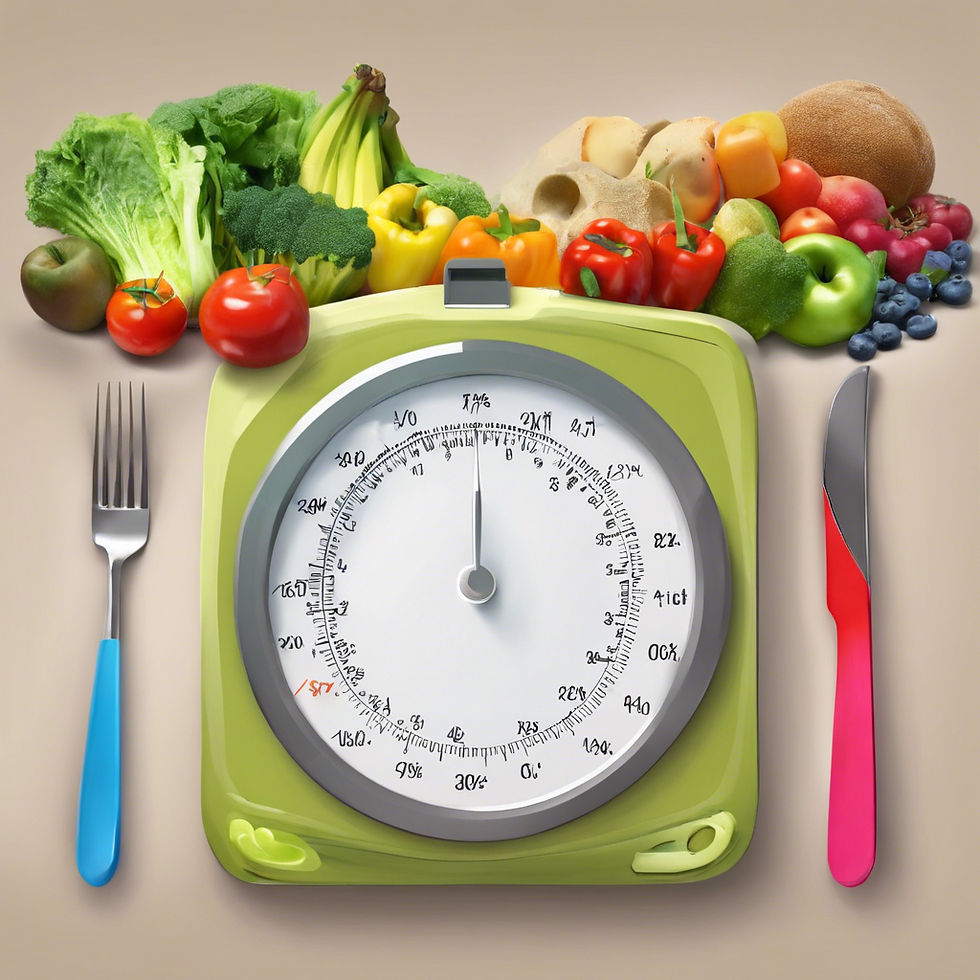Figuring Out the Right Balance: How to Calculate Your Daily Calorie and Macronutrient Needs for Effective Weight Loss
- S.L.Wofford
- Nov 7, 2024
- 4 min read
Updated: Dec 27, 2024

Losing weight isn’t just about cutting calories; it’s about striking the right balance between calorie intake and macronutrient distribution. Understanding your body’s specific needs can make all the difference in your weight loss journey. In this guide, we’ll walk you through calculating your daily calorie and macronutrient needs, presented step-by-step for clarity and ease.
Understanding Your Basal Metabolic Rate (BMR)
Your Basal Metabolic Rate (BMR) is the number of calories your body needs to perform essential functions like breathing and cell production at rest. Your BMR is a crucial starting point for understanding your total energy needs.
Calculating BMR
You can estimate your BMR using specific formulas for men and women:
For Women:
\[ BMR = 655 + (9.6 \times \text{weight in kg}) + (1.8 \times \text{height in cm}) - (4.7 \times \text{age in years}) \]
For Men:
\[ BMR = 66 + (13.7 \times \text{weight in kg}) + (5 \times \text{height in cm}) - (6.8 \times \text{age in years}) \]
For instance, let’s say you weigh 70 kg, are 165 cm tall, and are 30 years old. Using the formula for women, you would calculate:
\[ BMR = 655 + (9.6 \times 70) + (1.8 \times 165) - (4.7 \times 30) \]
\[ BMR = 655 + 672 + 297 - 141 = 1483 \]
Thus, your BMR is approximately 1483 calories per day. This is your baseline, representing calories burned while at rest.
Estimating Your Total Daily Energy Expenditure (TDEE)
After determining your BMR, the next step is to find your Total Daily Energy Expenditure (TDEE). This measure reflects how many calories you burn each day, considering your physical activity levels.
Activity Factors
You calculate your TDEE by multiplying your BMR by an activity factor. Here’s a breakdown of these factors:
Sedentary (little to no exercise): \( BMR \times 1.2 \)
Lightly active (light exercise 1-3 days/week): \( BMR \times 1.375 \)
Moderately active (moderate exercise 3-5 days/week): \( BMR \times 1.55 \)
Very active (intense exercise 6-7 days/week): \( BMR \times 1.725 \)
Super active (very intense exercise or physical job): \( BMR \times 1.9 \)
Continuing with our previous example, if you're moderately active, you would multiply your BMR (1483) by 1.55:
\[ TDEE = 1483 \times 1.55 = 2290 \]
So, your estimated TDEE is around 2290 calories per day.
Creating a Caloric Deficit for Weight Loss
To lose weight effectively, you need to create a caloric deficit. This means you should consume fewer calories than your body expends.
How to Establish Your Caloric Deficit
A safe and effective caloric deficit typically ranges from 500 to 750 calories below your TDEE. This deficit generally allows for a weight loss rate of about 1 to 1.5 pounds per week, which is considered safe.
For a TDEE of 2290 calories, aim for:
1830 calories for a 500-calorie deficit
1540 calories for a 750-calorie deficit
Adjusting to around 1800 calories a day can help ensure sustainable weight loss.
Setting Your Macronutrient Ratios
With your calorie target set, it's time to break it down into macronutrients: proteins, carbohydrates, and fats.
Macronutrient Recommendations
A balanced intake can typically be broken down into:
Protein: 1.2 to 1.5 grams per kg of body weight, around 20-30% of your daily calories.
Carbohydrates: Aim for 40-50% of daily calories.
Fats: Approximately 20-30% of daily calories.
Example Calculation
Assuming your target is 1800 calories, here’s how to break it down:
Protein: If you weigh 70 kg and aim for 2 grams of protein per kg, you would need 140 grams of protein. This equates to 560 calories (since 1 gram of protein = 4 calories).
Carbohydrates: If you allocate 50% of your calories to carbohydrates, that’s 900 calories, which equals about 225 grams.
Fats: The remainder comes from fats, leading to 340 calories, equating to about 38 grams (since 1 gram of fat = 9 calories).
Putting this together results in:
Protein: 140g = 560 calories (31%)
Carbohydrates: 225g = 900 calories (50%)
Fats: 38g = 340 calories (19%)
This structured approach ensures you hit both caloric and nutritional needs to maintain muscle mass while losing weight.
Tracking Your Progress
Calculating your calorie and macronutrient needs is just the start. Regular tracking of your intake and progress is vital.
Tips for Tracking
Use an App: Many apps can help track your daily intake, making it easier to meet your targets.
Stay Consistent: Consistency in tracking will provide the best outcomes.
Adjust as Needed: Remember, these calculations are not final. If you aren’t seeing results, consider revisiting your numbers.
Common Mistakes to Avoid
Even with a solid plan, common pitfalls can derail progress:
Skipping Meals: Skipping meals can slow your metabolism, making weight loss harder.
Neglecting Macronutrient Balance: Meeting caloric goals without considering macronutrient ratios can hinder your progress.
Overestimating Exercise: Many tend to overestimate calories burned during physical activity. Be realistic to better manage expectations.
Your Path to Success
Understanding how to calculate your daily calorie and macronutrient needs may seem challenging, but with practice, it becomes second nature. By accurately determining your BMR, TDEE, and macronutrient ratios, you create a personalized plan that supports your weight loss goals.
Remember that weight loss is often a gradual journey. Stay patient and keep tracking your habits. Focus on maintaining a balanced intake of essential nutrients to support your overall health.
Here’s to your health and success in achieving your weight loss goals!


